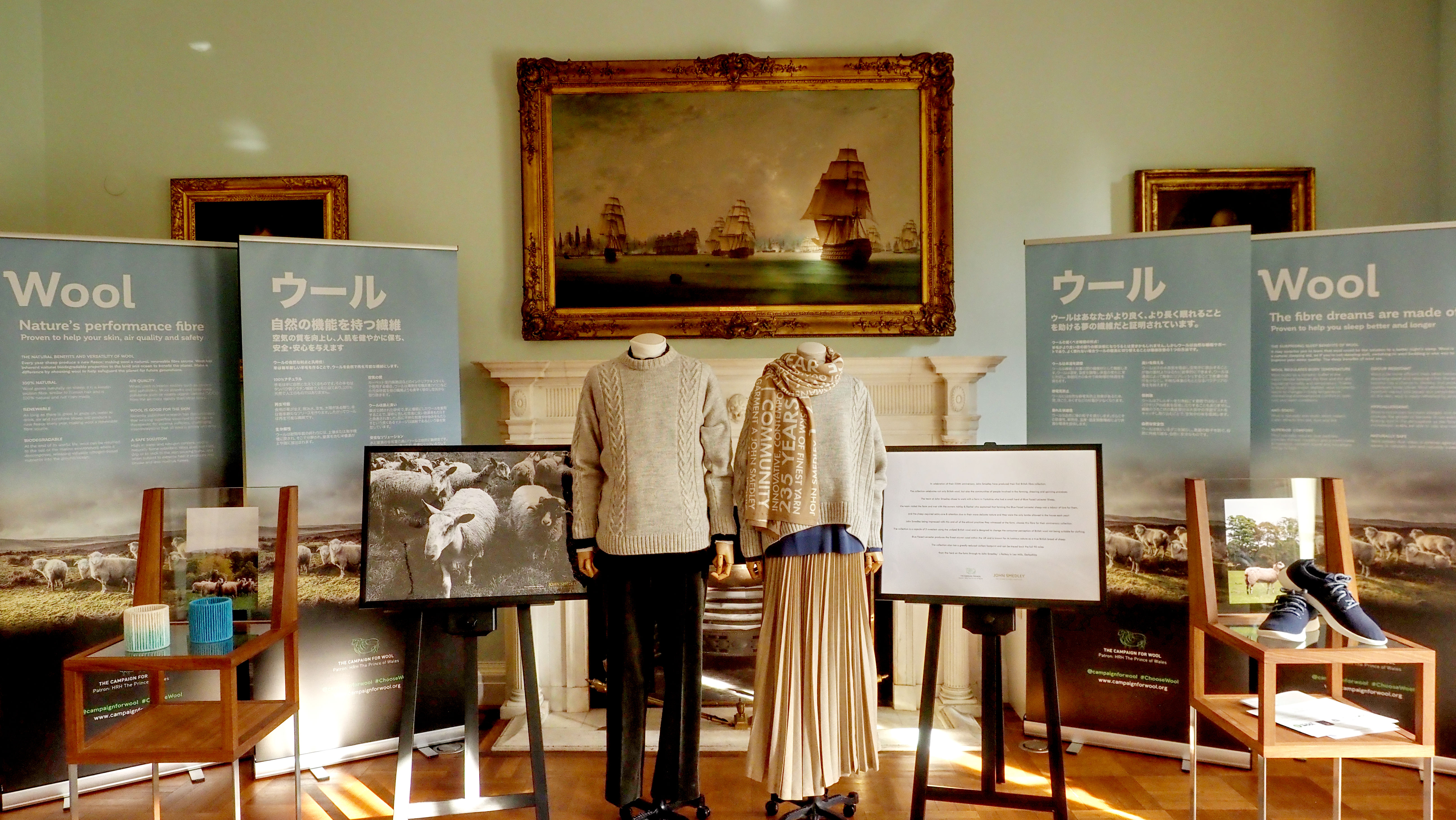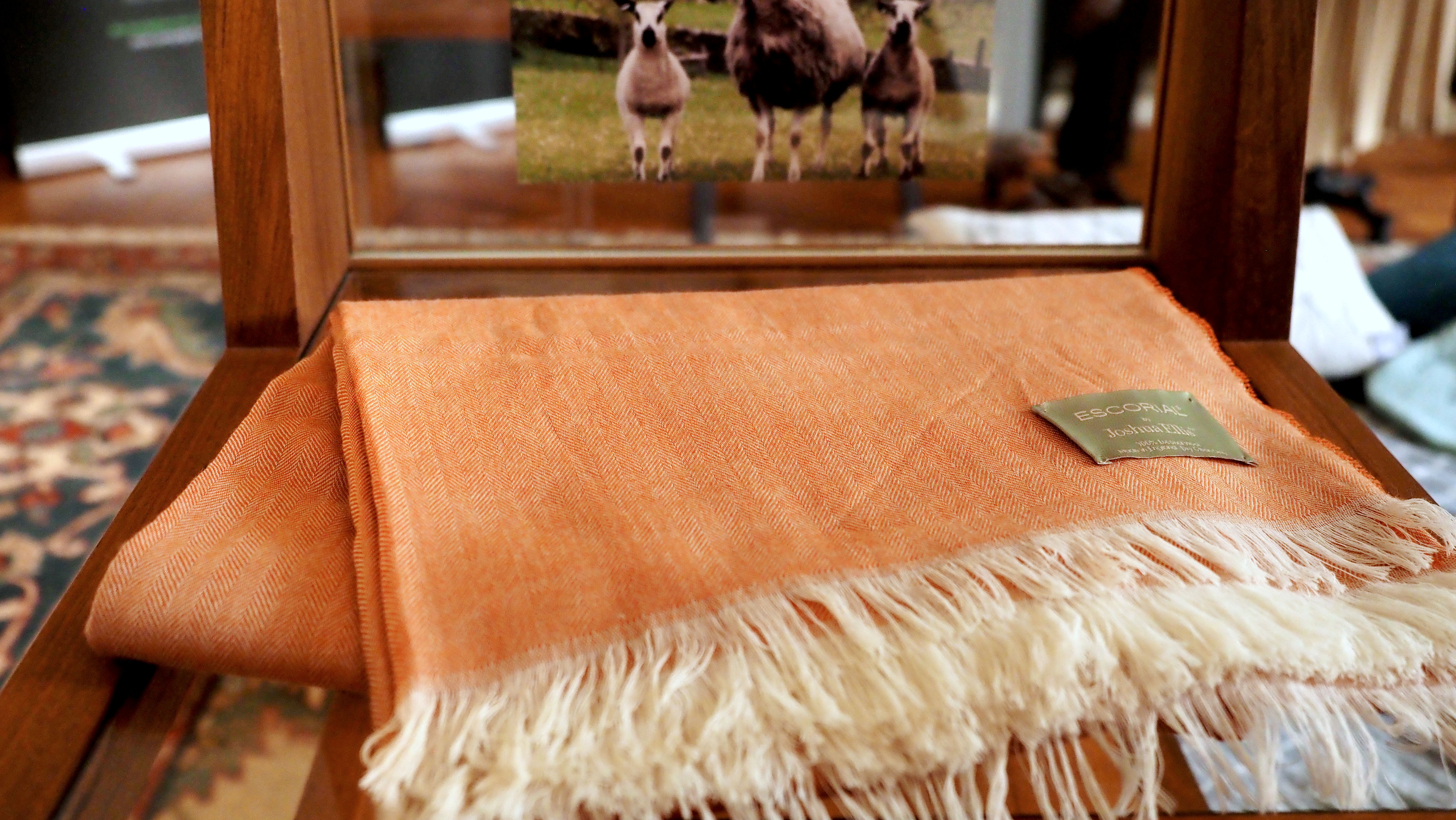His Royal Highness The Prince of Wales Experiences Wool’s Well- Being Properties.
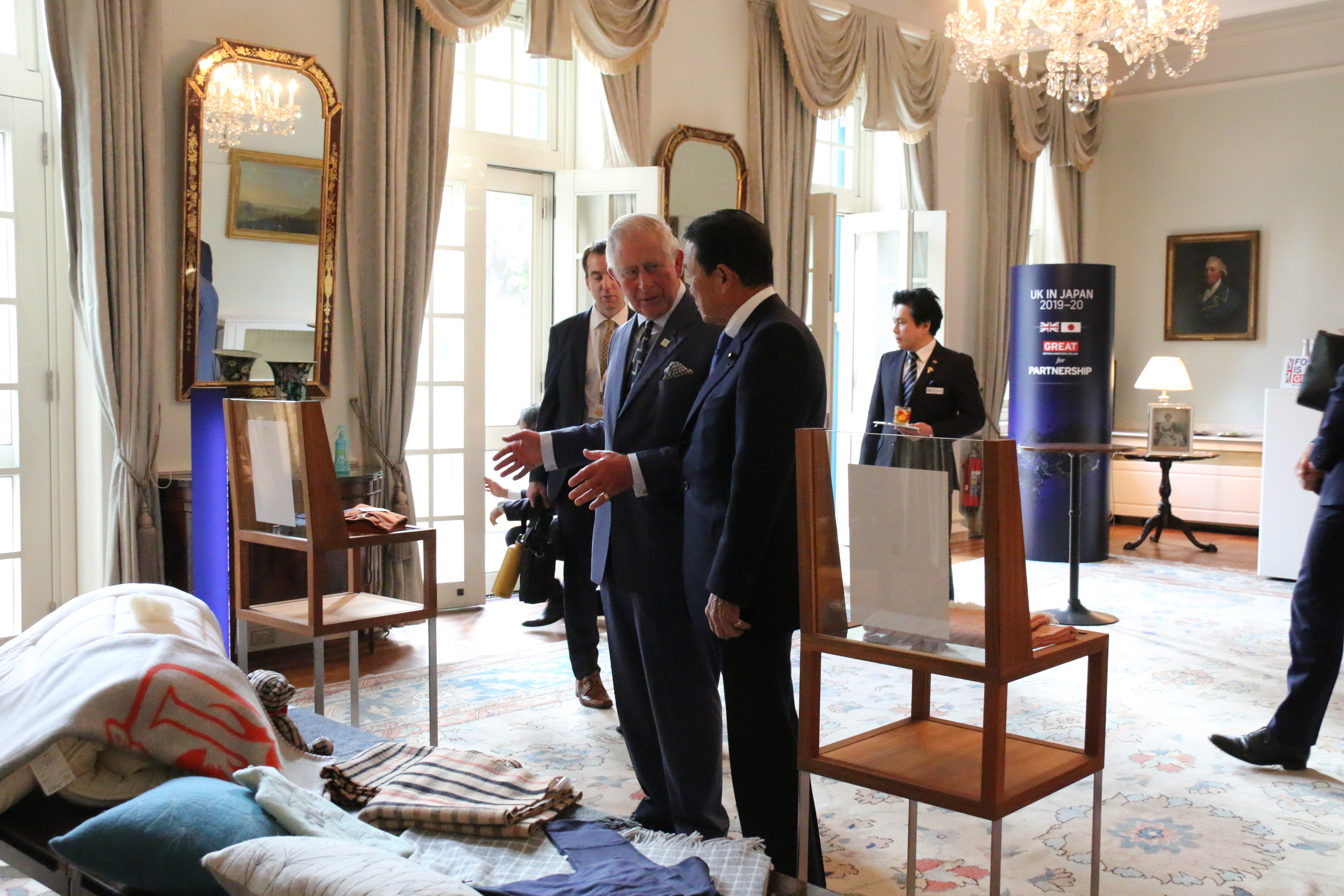
His Royal Highness The Prince of Wales
Deputy Prime Minister of Japan and Minister of Finance Taro Aso
Image credit: The British Embassy Tokyo.
His Royal Highness The Prince of Wales visited the British Embassy in Japan durning #RoyalVistJapan to celebrate the UK and Japanese connections. The Great campaign is running a series of events and activities to showcase UK excellence in business, innovation, culture, arts and education in order to build closer relationships between the UK and Japan. This included a display from the Campaign for Wool that highlighted the attributes of wool for well-being.
Wool is known for its biodegradability in the land and ocean which is becoming a topic of social discussion and engagement as the Campaign for Wool continues to push this message globally through Wool Week, social and other promotional opportunities for consumers to Make A Difference and to Choose Wool for their next garment or product in the home. Collectively we can all make a small difference and accumulatively this can only help the plastic issue we are facing globally.
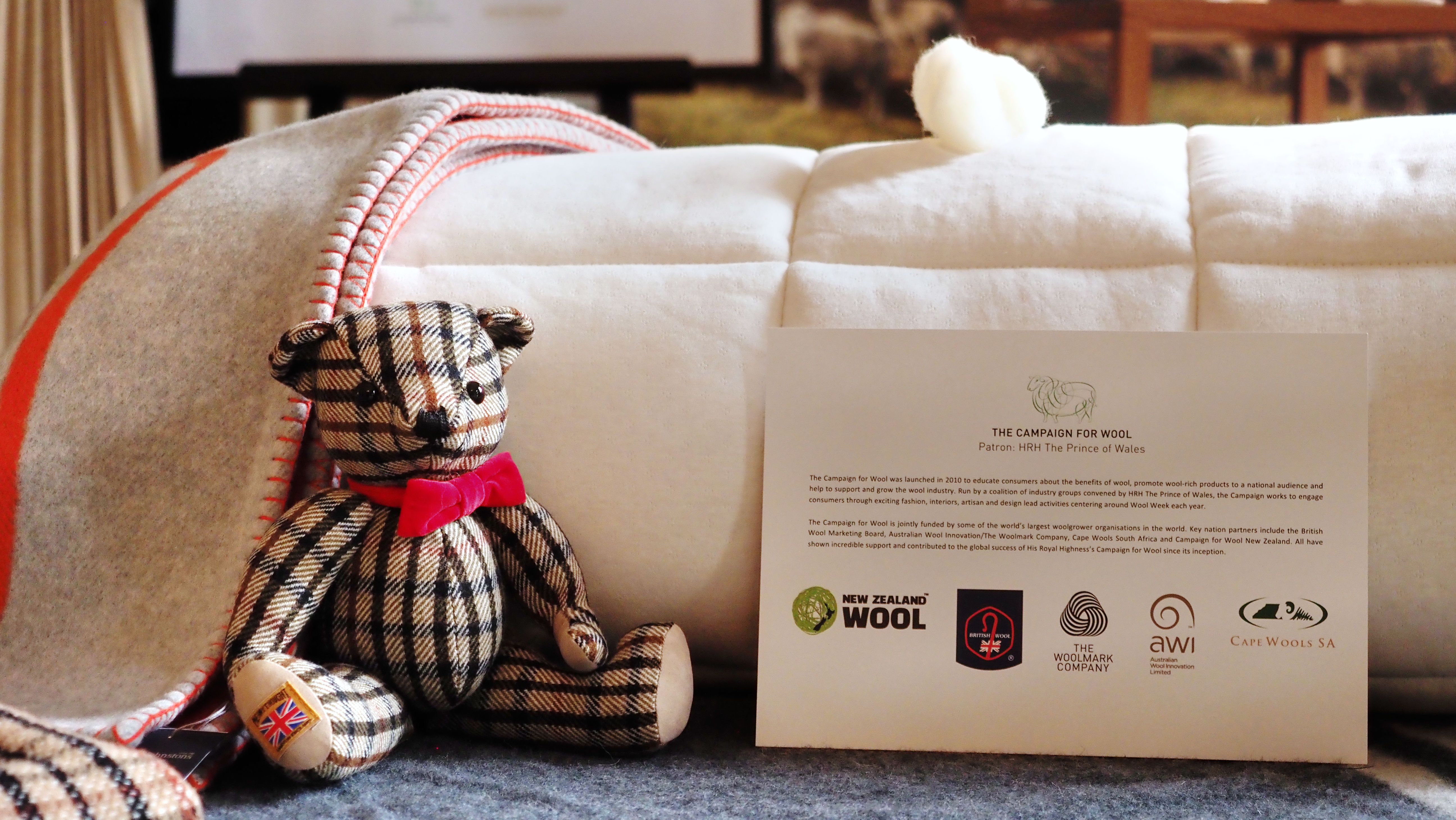
Wool is less known for its health and well-being properties, but has a great story to tell, with its eco- credentials propelling the fibre into the health and wellbeing industries. Science* is showing that wool bedding and sleepwear appear to promote a better night’s sleep, and medical studies reveal the wellbeing benefits of superfine Merino wool, particularly for eczema sufferers#. Wool can improve air quality@ and also absorb VOC’s (released from many products found in our homes and offices; solvents, paints, cleaners and disinfectants, air fresheners. Used in furniture, carpets, bedding, clothing or insulation, wool can be a sustainable and natural solution to the problem of accumulating indoor contaminants.
As Japan found new prosperity in the 1950s and 1960s at a time when traditional values in the home were being revisited, consumers of futons and mattresses routinely asked for bedding products filled
with quality wool. As there are very few sheep in Japan, this growing demand was met by wools from Australia, New Zealand, South Africa and the UK and the market grew to between 6000 to 7000 tons of wool per year.
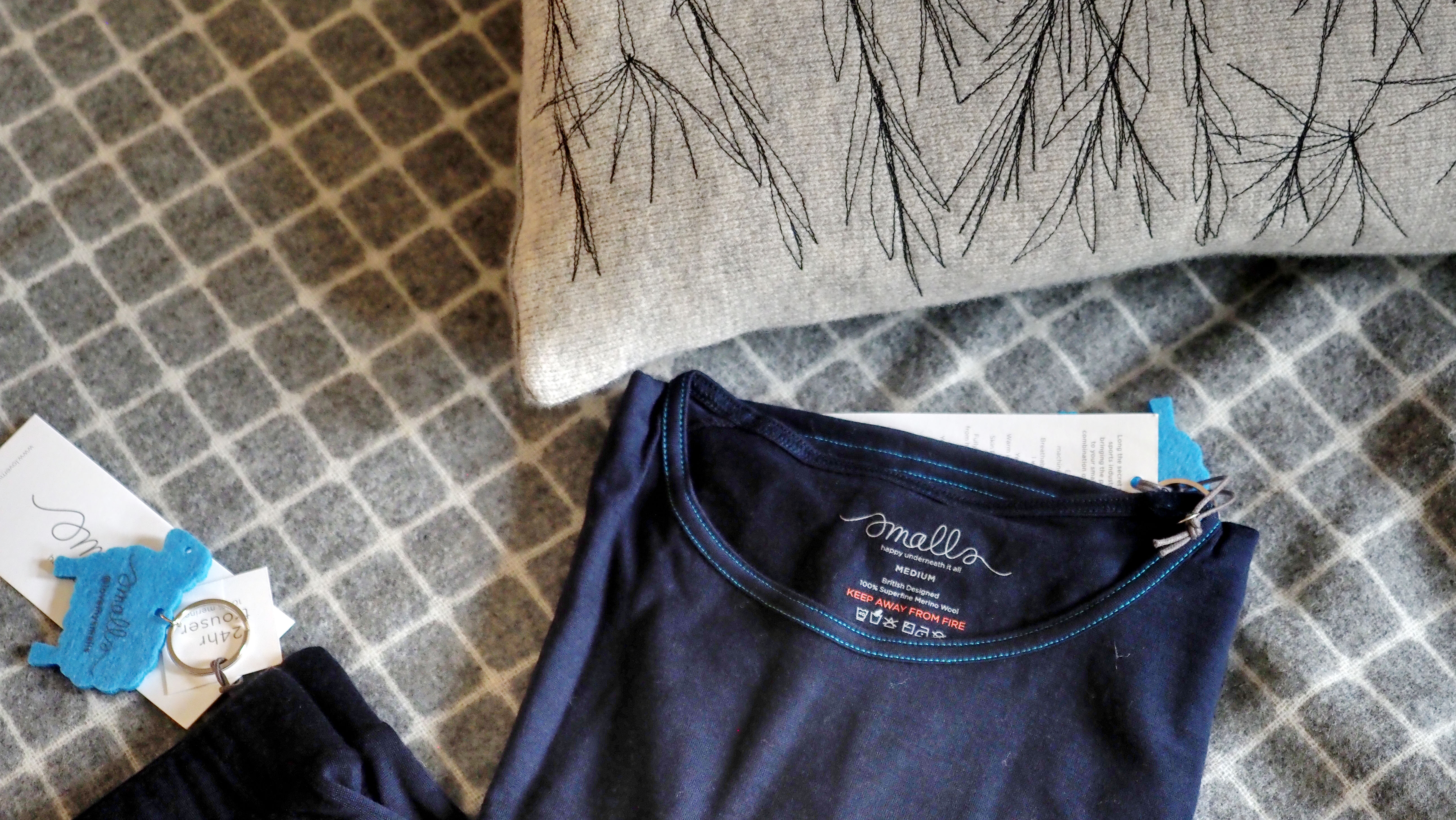
Unfortunately, this brief encounter with sustainability was short lived, as mills across Japan began to produce polyester at predatory prices that ultimately reduced wool’s place in the futon market to around ten percent of the total, reducing the bedding market of all the proven health advantages of sleeping with wool.
Peter Ackroyd, COO The Campaign for Wool said “Wool regulates your body temperature far better than any other fibre, keeping you in what is known as ‘the thermal comfort zone’. You therefore not only fall asleep quicker and sleep longer, but also have deeper, better quality sleep.”
“We are pleased to have the support of the Campaign for Wool Supporters in the creation of the wool well-being space at the Embassy, these include Johnstons of Elgin, DAKS, Hotta Carpets, Nishikawa Co. Ltd, AW Hainsworth, Smalls, Janie Withers, Abraham Moon & Sons, Joshua Ellis (Escorial Wool), Smalls, Allbirds, MamaOwl, Wool&Prince, and with special thanks to John Smedley.”
The Prince of Wales noted in launching his Campaign: “Wool is a product that the most brilliant boffin in the most hi-tech laboratory could never create.”
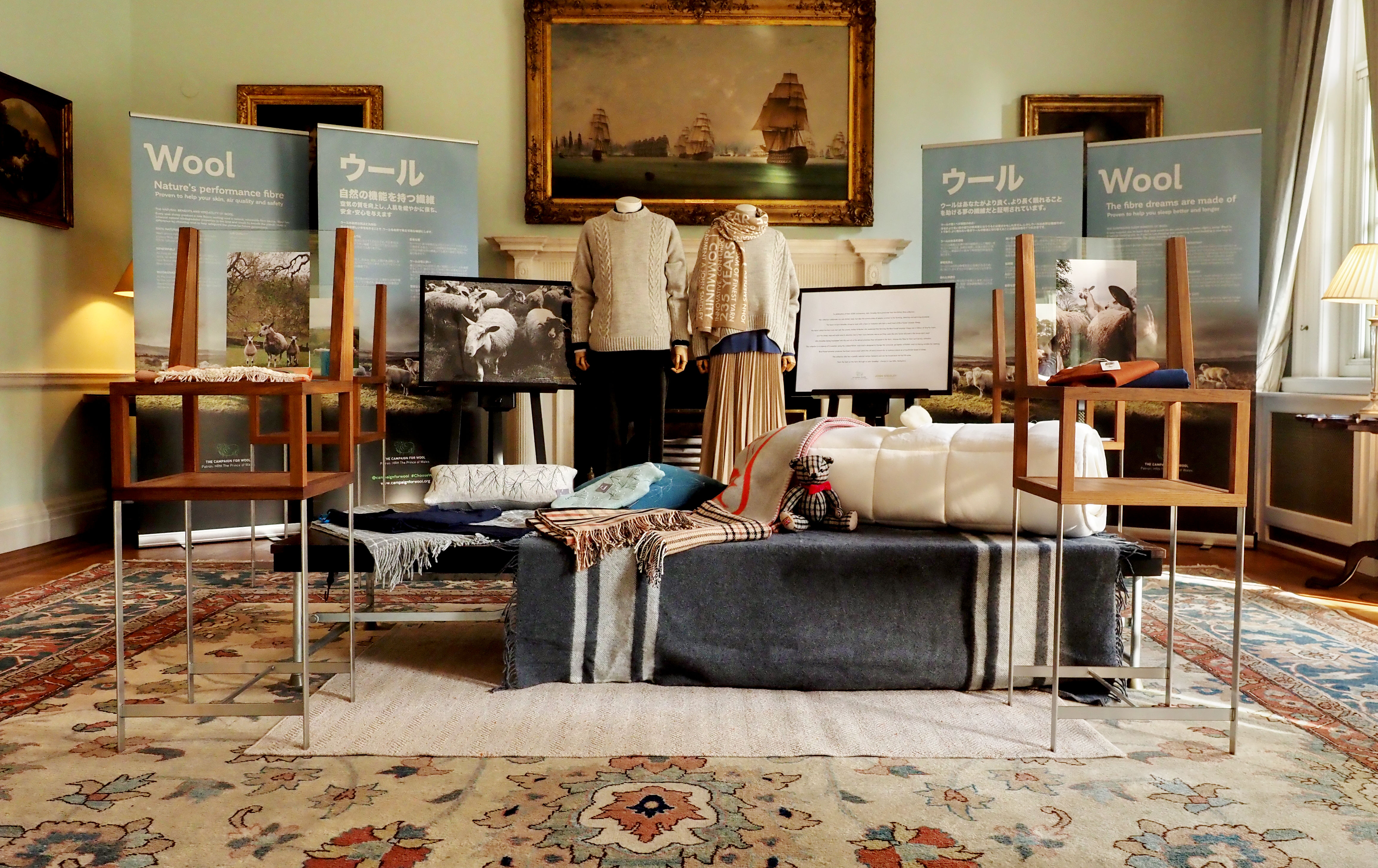
Research provided by The Woolmark Company and IWTO
* A three-year study conducted at the University of Sydney showed that wool sleepwear promoted faster sleep onset than cotton sleepwear. Differences in sleep quality also showed that a combination of wool sleepwear and bedding produced a deeper and longer sleep with participants waking less frequently.
# Dermatological trials have shown that eczema sufferers who wear superfine Merino wool garments – of 17.5 micron or less – next to the skin have significantly reduced symptoms. In a study of approximately 40 babies and young children under 3 years old at the Murdoch Childrens Research Institute (MCRI) in Melbourne, Australia, superfine Merino wool clothing reduced the severity of paediatric mild-to-moderate atopic dermatitis compared with cotton, showing significant advantages of wearing superfine Merino wool base-layers.
@ Concentrations of some air pollutants may be two- to five-fold higher indoors than outdoors. Improvements in thermal insulation, in order to reduce heat loss, and scarce ventilation in modern dwellings, have also led to a deterioration of indoor air quality. The result can be what is known as sick building syndrome (SBS) – feelings of ill health that seem to be linked directly to the time spent in that building. Studies have shown that common VOCs, which are implicated as a cause of SBS, can be absorbed and chemically bound by wool, improving ambient air quality.






